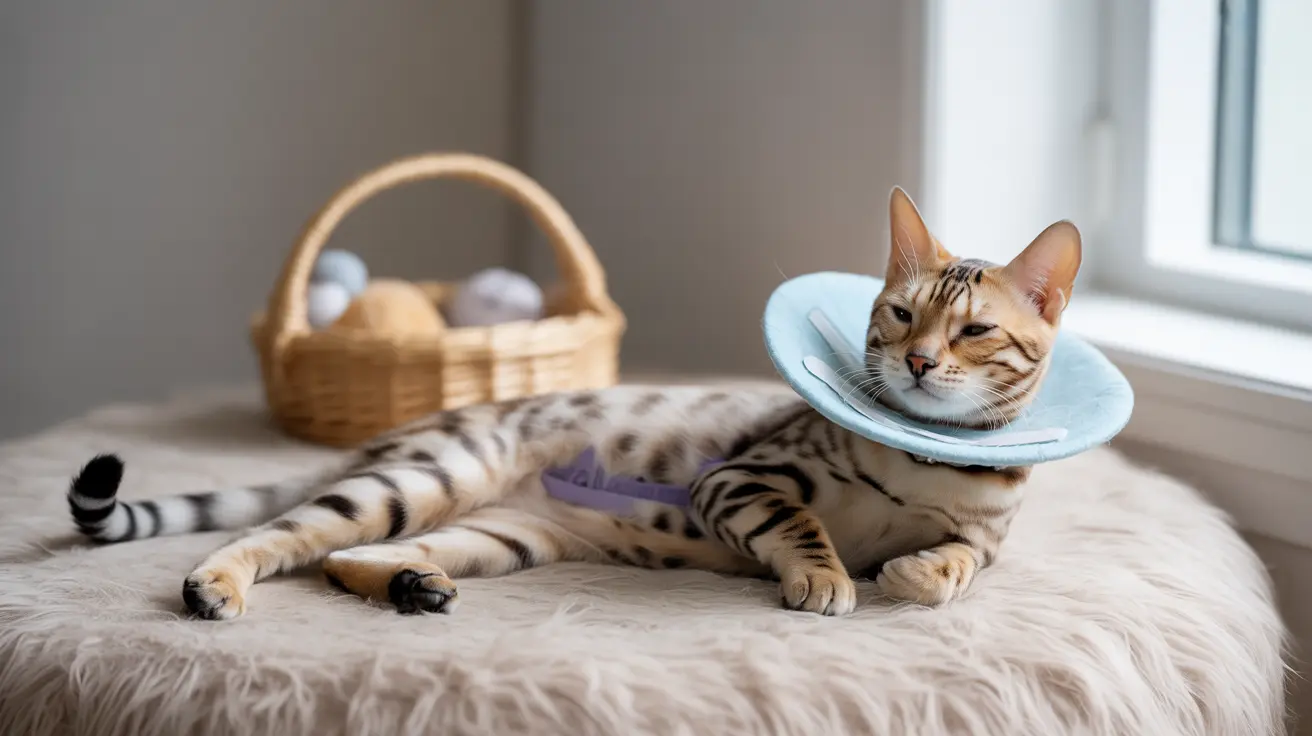Critical Warning Signs to Watch For
The first 24-48 hours after surgery are particularly crucial. Be alert for these serious warning signs that require immediate veterinary attention:
- Lethargy lasting more than 36 hours
- Refusal to eat or drink for over 24 hours
- Excessive bleeding or discharge from the incision
- Severe swelling or bruising
- Pale gums or difficulty breathing
- Signs of severe pain despite medication
Normal Recovery Timeline
Understanding what's normal helps distinguish concerning symptoms from expected recovery signs:
First 24-48 Hours
- Mild grogginess from anesthesia
- Decreased appetite
- Some discomfort around the incision site
- Quieter behavior than usual
Days 3-7
- Gradual return to normal energy levels
- Improved appetite
- Healing incision with minimal redness
- Increased activity (which should still be restricted)
Incision Site Care and Monitoring
Proper incision care is vital for preventing complications:
- Keep the area clean and dry
- Check the incision twice daily
- Ensure your cat wears an E-collar to prevent licking
- Watch for signs of infection like redness, swelling, or discharge
- Prevent jumping and rough play until fully healed
Serious Complications to Monitor
While rare, these complications require immediate medical attention:
- Incision dehiscence (opening of the surgical site)
- Internal bleeding (indicated by a swollen abdomen or pale gums)
- Infection (marked by fever, lethargy, or discharge)
- Urinary problems (straining or inability to urinate)
Preventing Recovery Complications
Take these steps to ensure a smooth recovery:
- Create a quiet, confined recovery space
- Follow all medication instructions precisely
- Restrict activity for 10-14 days
- Maintain regular veterinary check-ups
- Keep other pets separated during initial recovery
Frequently Asked Questions
What are the most common bad signs to watch for after my cat's spay surgery?
The most concerning signs include prolonged lethargy, refusal to eat or drink for over 24 hours, bleeding or discharge from the incision, severe swelling or bruising, and signs of intense pain. Any of these symptoms warrant immediate veterinary attention.
How long does it typically take for a cat to fully recover from spaying, and what behaviors are normal?
Full recovery typically takes 10-14 days. Normal behaviors include initial sleepiness, reduced appetite for 24 hours, and gradual return to normal energy levels. Your cat should show steady improvement each day after surgery.
When should I contact the vet if my cat refuses to eat or shows lethargy after being spayed?
Contact your vet if your cat hasn't eaten within 24 hours after surgery or if lethargy persists beyond 36 hours post-operation. These could indicate complications requiring medical attention.
How can I properly care for and monitor my cat's incision site to prevent infection after spay surgery?
Check the incision twice daily for redness, swelling, or discharge. Keep the area clean and dry, ensure your cat wears an E-collar, and prevent licking or scratching. Report any concerning changes to your vet immediately.
What are serious complications like incision opening, bleeding, or urinary problems after cat spaying, and how are they treated?
These are emergency situations requiring immediate veterinary care. Treatment may include surgical repair for opened incisions, antibiotics for infections, or catheterization for urinary issues. Early intervention is crucial for the best outcome.
Remember, while complications after spaying are relatively rare, being vigilant and responding quickly to warning signs ensures the best possible recovery for your cat. When in doubt, always consult with your veterinarian.






